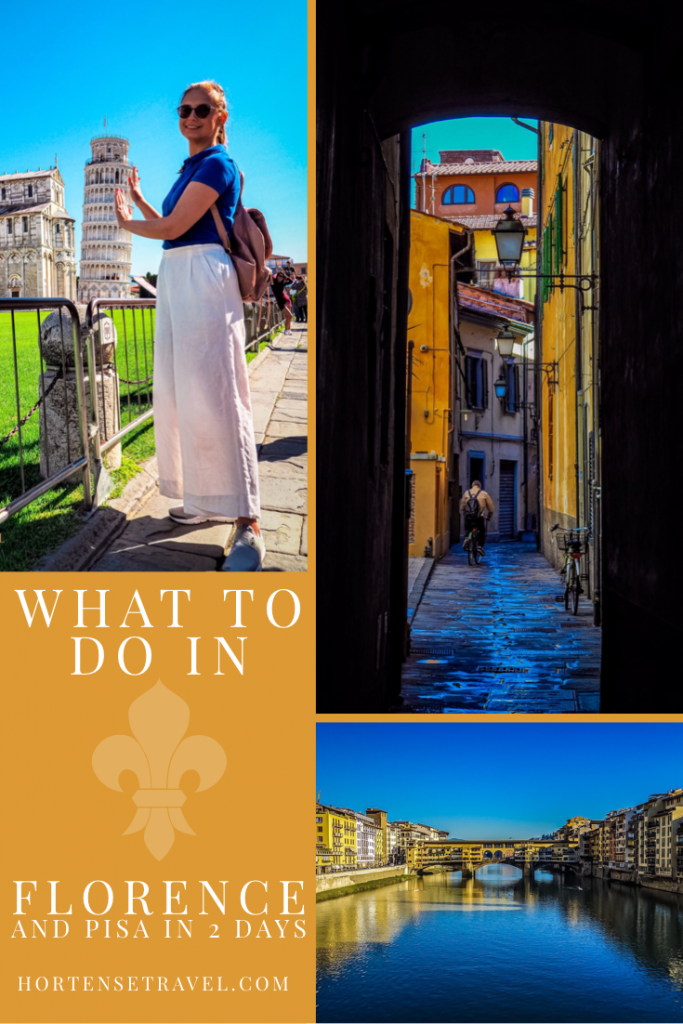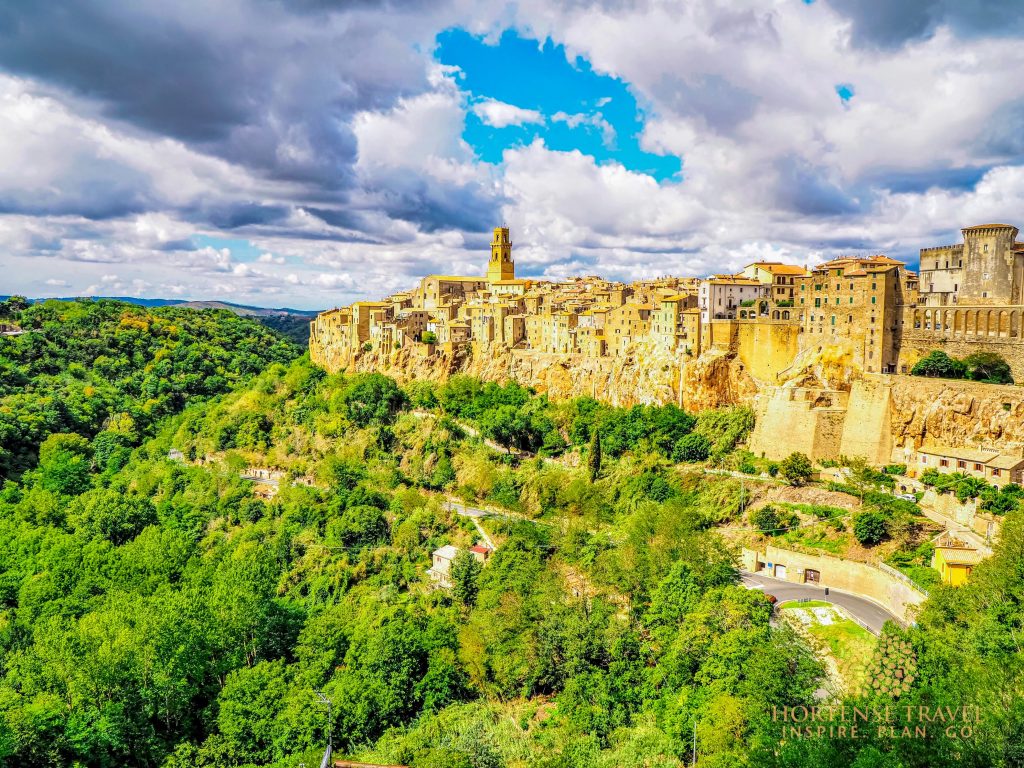
Italy is a country of outstanding natural beauty, there are thousands of amazing historical, archaeological and architectural sights to see, and the food is simply to die for. Two of the most popular destinations that travelers don’t miss are Florence and Pisa.
Both located in the stunning region of Tuscany, these two enchanting cities are located just an hour’s train ride away from each other, making it perfectly feasible to combine them both into a two-day trip.
Here’s A Guide on What to See in Florence and Pisa.
What to Do Florence?
Florence is the capital of the Tuscany region and considered to be a cultural, architectural and artistic wonder. There is plenty to see here, some of which may require advance booking, so keep this in mind when you are planning your trip.
Piazza del Duomo
The Piazza del Duomo is usually the first port of call for visitors when they arrive in Florence as it is the location of the city’s most famous sight. Florence’s Duomo – or cathedral – was an astounding feat of engineering when it began construction in the 13th century.
Dominating the city with its impressive dome, the cathedral complex is absolutely huge – it is actually the fourth largest cathedral in the world, plus there are buildings all around it – so there is lots for you to see here. Dotted around the exterior of the cathedral you will see lots of marble figures and statues, all set within its intricately decorated facade.
Once you are inside, there are a number of points of interest, including the frescoes painted on the inside of the dome depicting scenes from the Last Judgement, the three frescoes along the left side of the nave, the clock above the entrance, and the 44 stained glass windows.
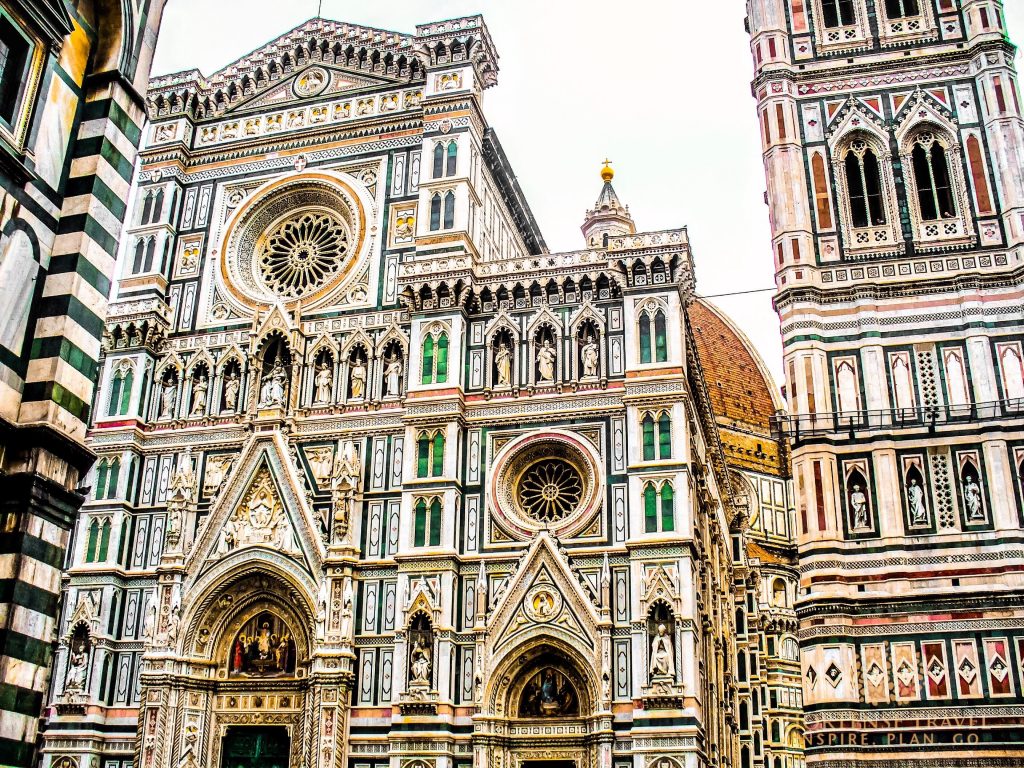
Heading down into the crypt you can see the remains of the old basilica Santa Reparata, the religious building the Duomo was built upon.
One of the best parts of a visit to the Duomo is climbing up the cupola to take in the magnificent views over Florence. Be warned that there are an exhausting 463 steps, there is no lift, and the staircases are extremely narrow, but it is definitely worth making the walk up if you can manage it.
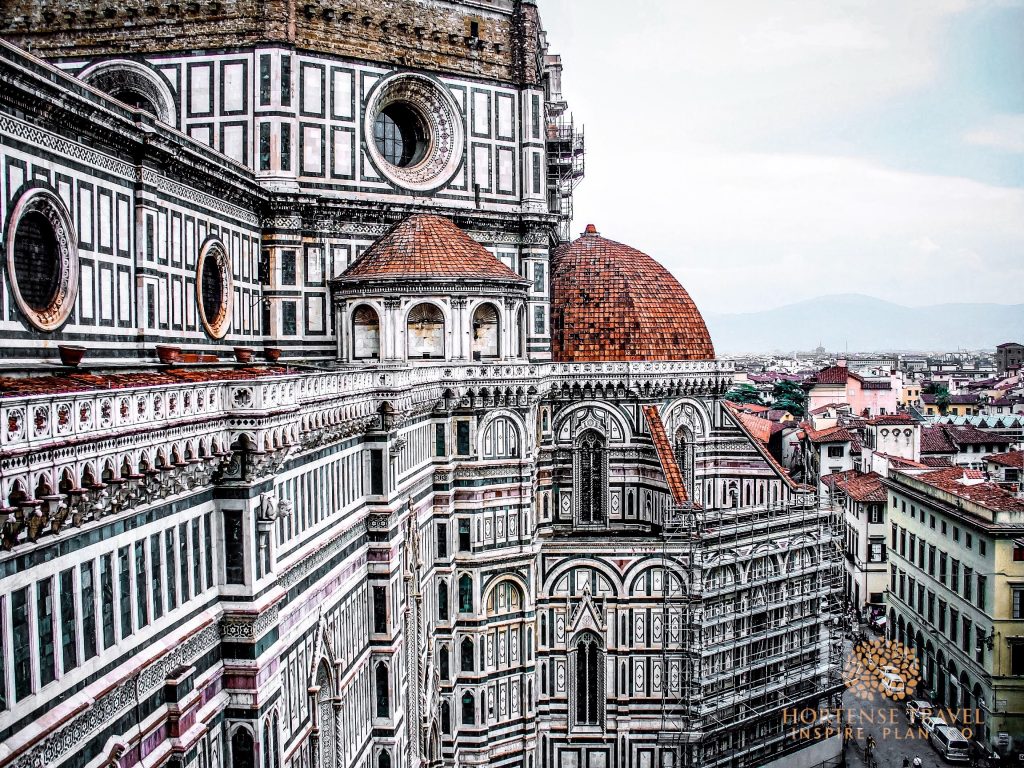
Located right in front of the cathedral is the baptistery, the oldest religious site in the whole of Florence. Consecrated in the 12th century, the baptistery is famous for its bronze doors depicting various religious scenes. Inside, the cupola is covered in beautiful mosaics dating back to the 13th century, a wonderful marble mosaic pavement, and oriental zodiac motifs. You can also see the monumental tomb of Antipope John XXIII.
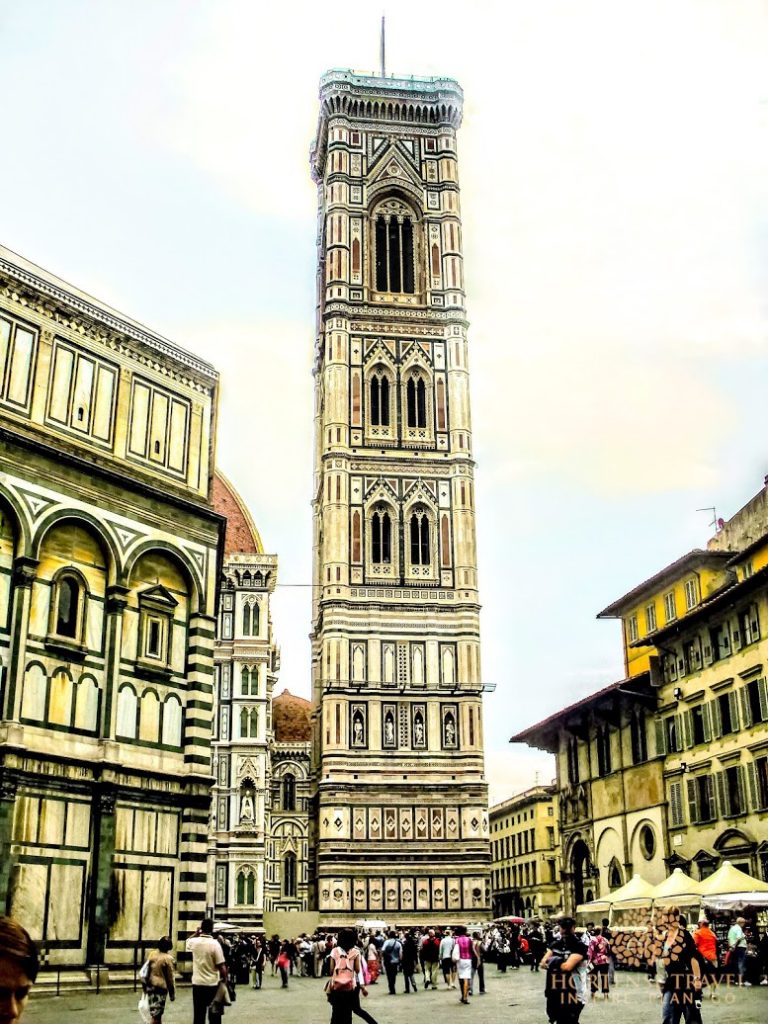
Adjacent to the cathedral is another of Florence’s most recognized sights, Giotto’s bell tower. Standing at almost 85 meters high, the tower is an elegant example of 14th-century Gothic architecture and is considered to be the most beautiful campanile in the whole of Italy.
The climb up to the top will reward you with amazing views, but if you feel that you cannot manage both climbing the Duomo and the bell tower, it is a lovely structure just to admire from the exterior.
Finally, you should definitely visit the Opera del Duomo Museum, which houses the artworks which, for one reason or another, have been removed from the cathedral or the baptistery.
There are hundreds of items here displayed in 25 rooms, from sculptures to originals of the baptistery doors. The museum is also home to ‘The Deposition’, a sculpture by Michaelangelo which he intended to be used for his own tomb.
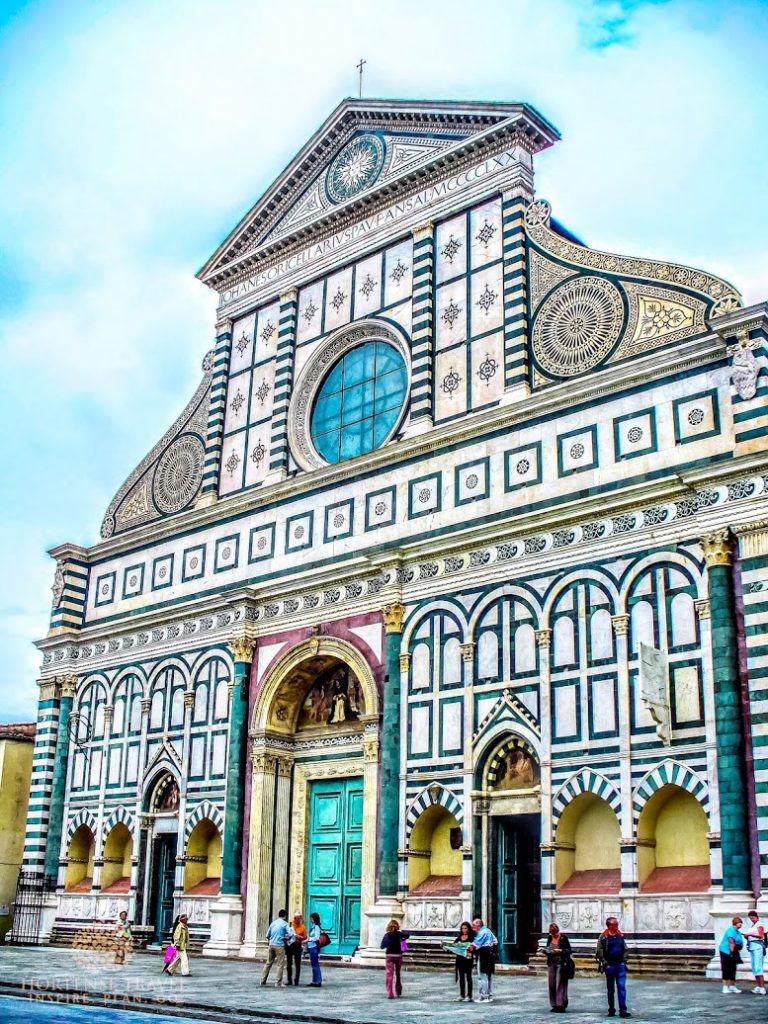
The cathedral itself is free to enter, but there are additional charges to climb up the bell tower and dome, the Baptistery and the museum. All tickets to the cupola are timed; make sure you arrive at least ten minutes before your allotted slot because if you miss it, you will not be allowed entry. Those who are wearing what is considered to be inappropriate attire – short skirts, shorts, etc. – will also be refused entry to all parts of the complex.
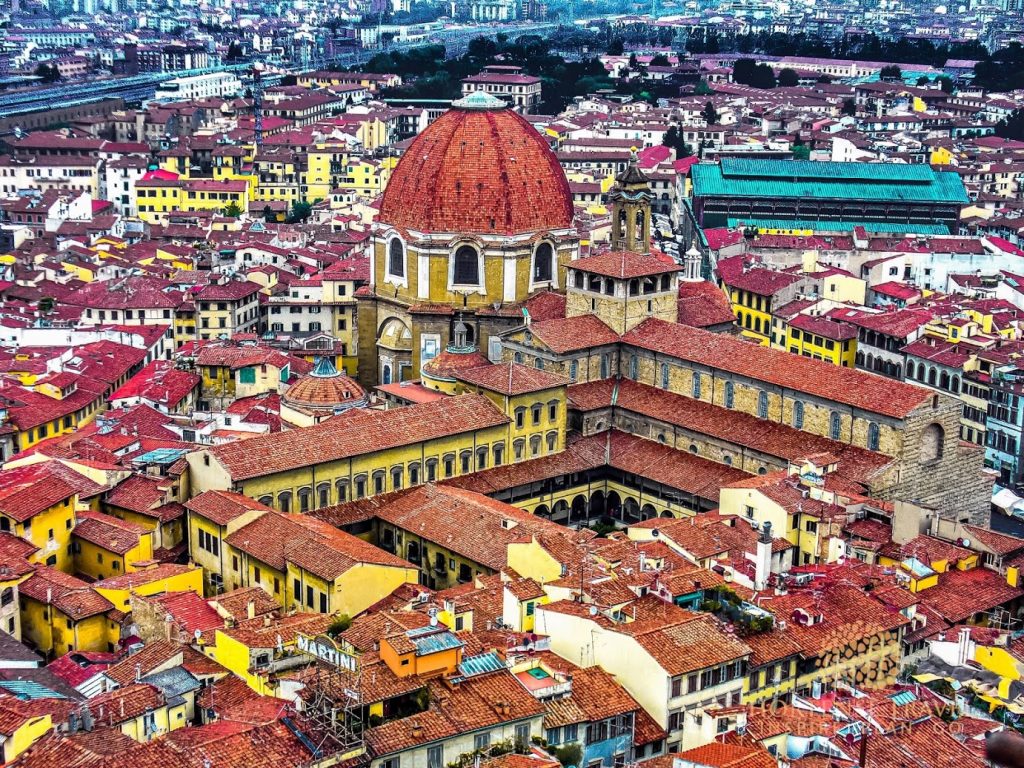
Palazzo Vecchio
The Duomo might be the most important religious building in Florence, but the Palazzo Vecchio takes the title of most important administrative buildings. It began life as the palace of the Signoria of the Republic of Florence before later becoming the city’s town hall.
On the front facade, you can see various coats of arms of the families and individuals significant to Florence’s history. You can also see a replica of Michaelangelo’s statue of David at the entrance, which is where the original once stood. The interior has a number of individually decorated rooms with an array of amazing artworks to admire.
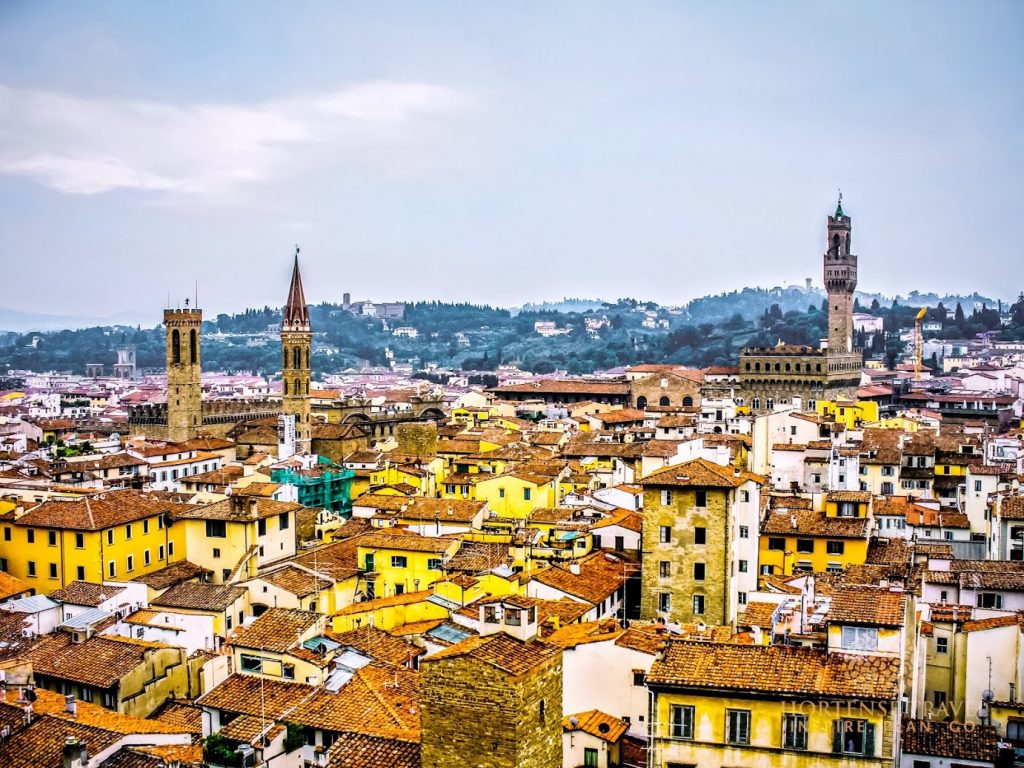
Piazza della Signoria
This is the square where the Palazzo Vecchio is situated, but it certainly is not the only reason for visiting. This square is famous for its numerous statues which you can see dotted all around.
On either side of the Palazzo Vecchio you will find the fountain of Neptune and the Loggia dei Lanzi, containing Renaissance sculptures of Hercules and Perseus, among others. Standing close to the fountain of Neptune is an imposing statue of Cosimo de’ Medici, the first member of the Medici family who de facto ruled Florence throughout the majority of the Renaissance period.
Ponte Vecchio
Literally translating as ‘Old Bridge’ in English, the Ponte Vecchio really is old – in fact, it is the oldest bridge in the world. It was originally built in the 10th century before being rebuilt in the 14th and was the only bridge in Florence that was not destroyed during World War II. Traditionally the bridge was lined with jeweller’s shops, which you can still find there today, but nowadays these are mixed with art dealers and souvenir shops
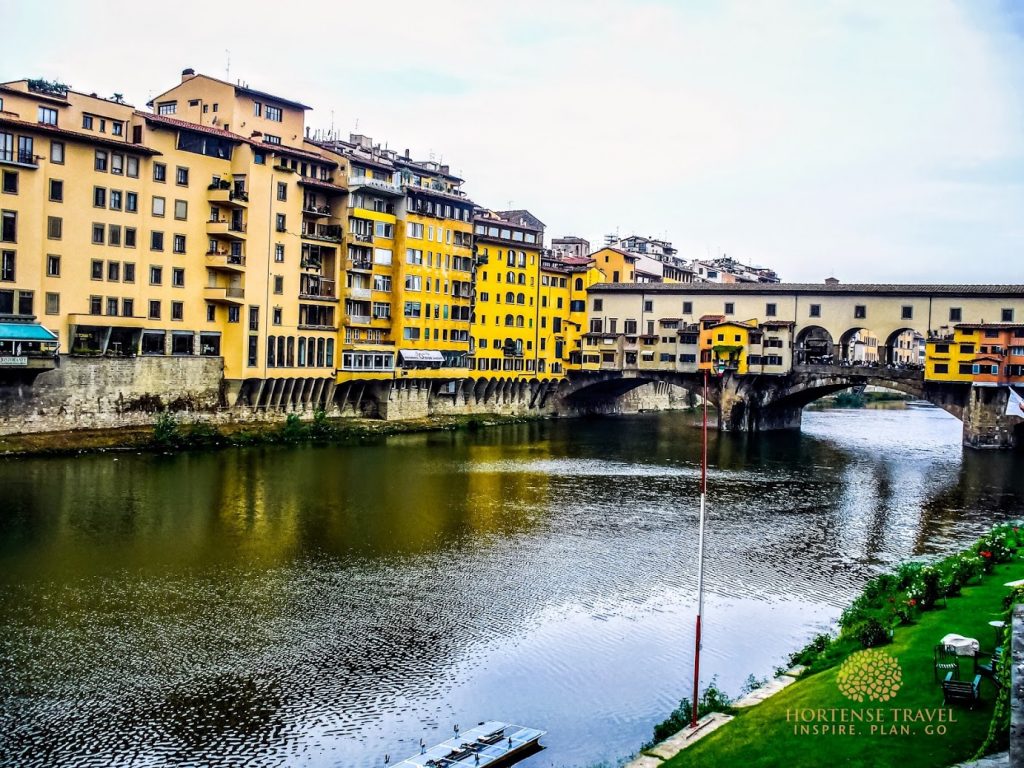
Uffizi Gallery
One of the most famous art galleries in the world, a visit to the Uffizi Gallery is an absolute must when you are in Florence. The gallery houses work by some of the most celebrated and influential artists the world has ever seen, including Leonardo da Vinci, Michaelangelo, Raphael, and Botticelli. It is highly recommended that you book your visit to Uffizi online in advance to make sure you actually get in on the day you want to visit.
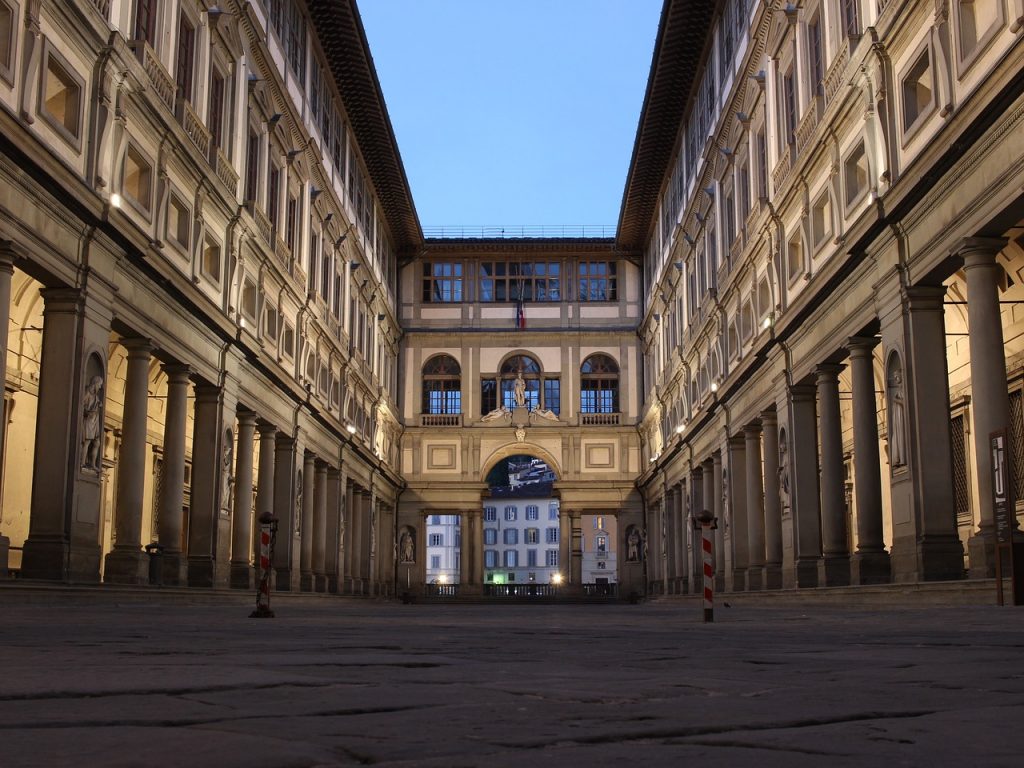
Santa Croce
It may not have the Duomo’s size, but the Basilica of Santa Croce is certainly a contender for the most beautiful church in Florence. The facade is an exquisite mix of green, pink and red marble polychrome panels which contrast marvelously with the white stone.
As well as being famed for its elegant beauty, Santa Croce is also known for being the resting place of some of the most influential Renaissance figures, including Galileo, Machiavelli, and Michaelangelo. There is also a cenotaph to Dante, another Florence citizen; however, he died while in exile from the city and the city still has not quite forgiven him for his indiscretion, so his remains are buried elsewhere.
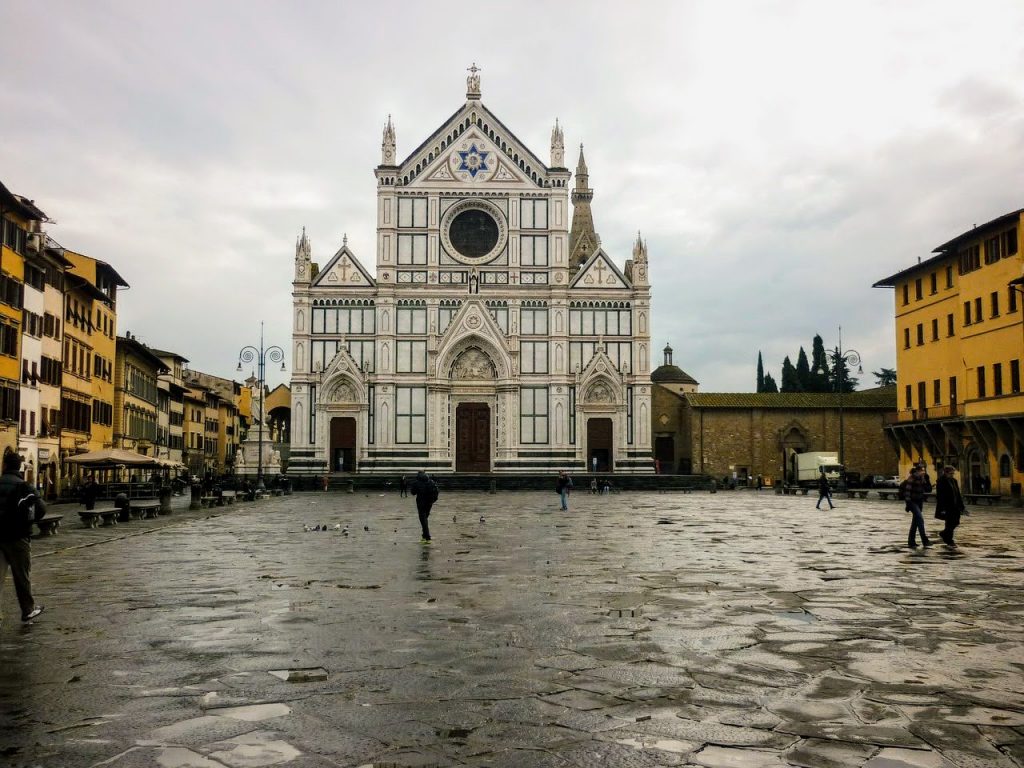
Leather Markets and Stores
Florence is well-known for being a great place for shopping, in particular, the high-quality leather goods you can purchase here. There are, of course, plenty of places where you can buy all kinds of leather items; however, some have a better reputation than others.
Cellerini is located in the old city center and has lots of excellent goods for sale; they will even custom-make a product to your exact specifications if you have time to pick it up at a later date. Misuri is possibly the oldest leather shop in Florence and has a convenient central location on Piazza Santa Croce, where you can buy well-crafted gifts for friends and family – and yourself!
Other fine stores include Stefano Bemer, specializing in shoes – Daniel Day Lewis spent ten months here training how to make shoes; Benheart, popular with the younger generations; and Casini, maker of exquisite jackets and bags.
Piazza Michaelangelo
If climbing the Duomo or Giotto’s bell tower does not massively appeal to you but you still want to see amazing panoramic views over the city, then the Piazza Michaelangelo is the place for you to go. As well as not having to walk up hundreds of stairs in very cramped conditions, the view from this square on the south side of the River Arno also includes a view of the cathedral, and it really is wonderful to behold.
At the center of the square, you will see a bronze statue of Michaelangelo’s David, plus there are a number of souvenirs and art stalls to browse.
The only disadvantage of the Piazza Michaelangelo is the distance from the rest of the important sights in the city – around four kilometers. For an itinerary of two days, it is advisable to take a taxi or an Uber to maximize your sightseeing time.
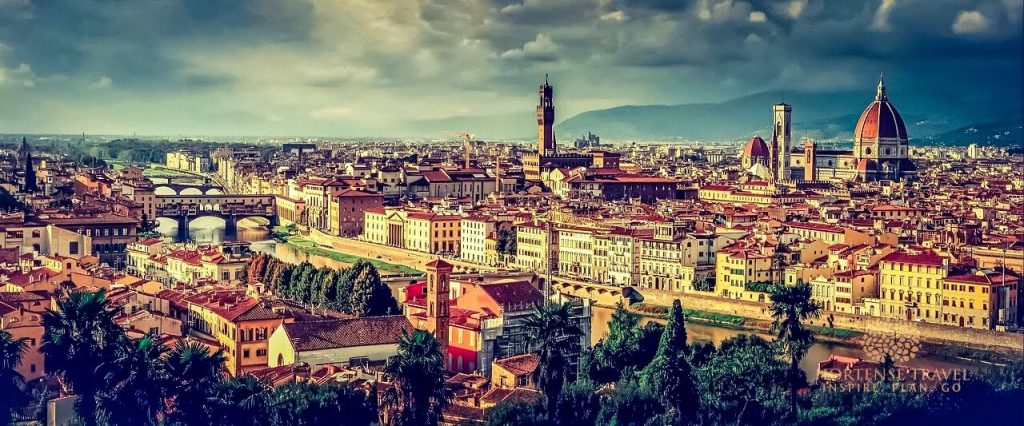
What to Do in Pisa?
Pisa is the smaller of the two cities and can easily be enjoyed in a day trip, or even a half-day trip if you are organized. Famous for its Leaning Tower, there are actually a few other sights here which are just as worthy of visiting.
Piazza dei Miracoli
Translating as the ‘Field of Miracles’, this piazza is where you will find Pisa’s most important sights – the Leaning Tower, the Cathedral, the Baptistery, and the Monumental Cemetery. The piazza is extremely important to the religious life in the city: the Baptistery represents birth, the cathedral and tower life, and the cemetery – obviously – death.
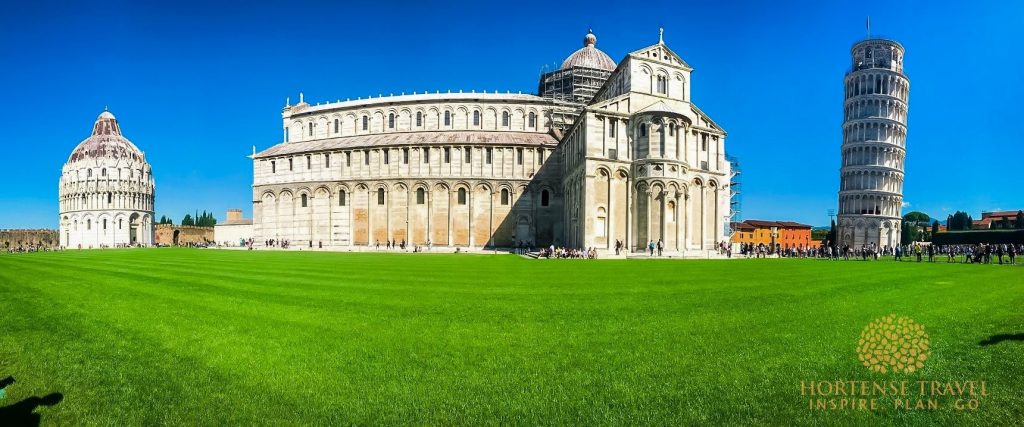
Leaning Tower
The sight which everyone heads to Pisa to see, the Leaning Tower of Pisa is a free-standing bell tower originally intended to be part of the city’s cathedral. Construction began in the 12th century and, despite being considered a miracle of medieval engineering, the tower began to lean almost immediately due to its unstable foundation.
By 1990, the degree of tilt had reached 5.5, but since then work has been completed on the tower, with it currently leaning at 3.97 degrees. As well as the obligatory photos to be taken of the tower’s exterior, it is now possible to climb the structure’s 297 steps to enjoy views from the top. There are limits to the number of tickets sold every day so it is highly recommended that you purchase your tickets online prior to your visit.
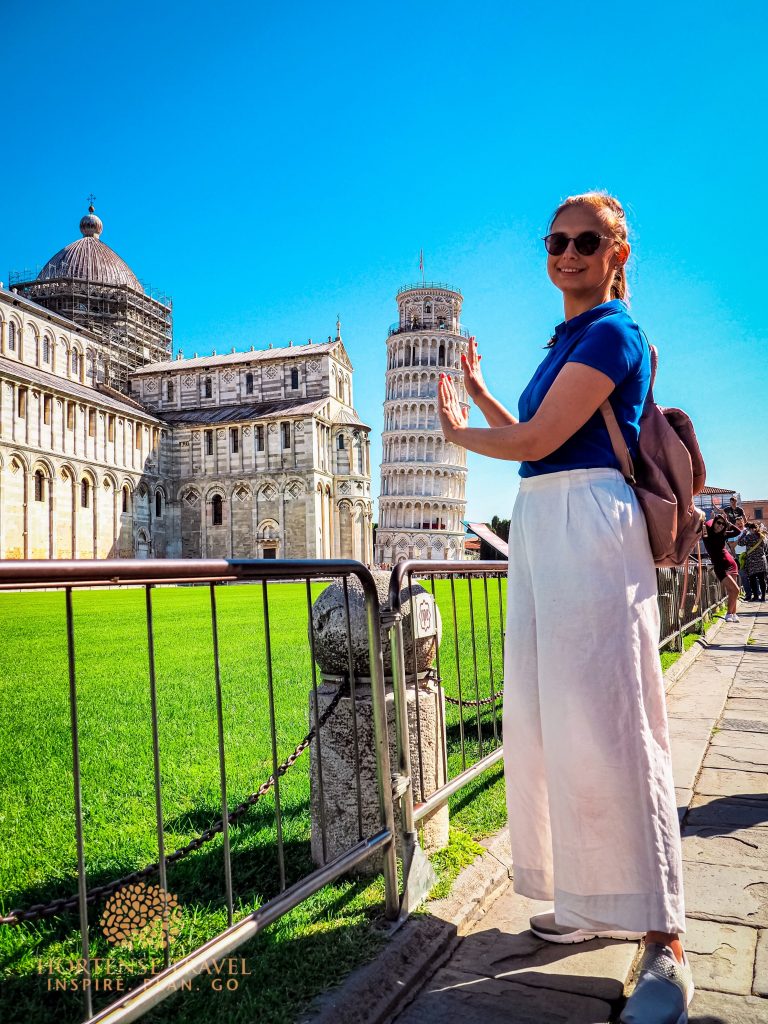
Cathedral
Situated right next to the bell tower, the cathedral is a stunning example of what is known as Pisan Romanesque architecture. Dating all the way back to the 11th century, on the exterior you will see various mosaics, multicolored marble, and a number of bronze objects, but it is inside that will really capture your attention.
As well as the exquisite marble, wood and golf leaf features, the cathedral also houses artwork by major artists such as Giambologna, Vanni and Della Robbia. You can also see the relics of Saint Rainerius, the patron saint of Pisa.
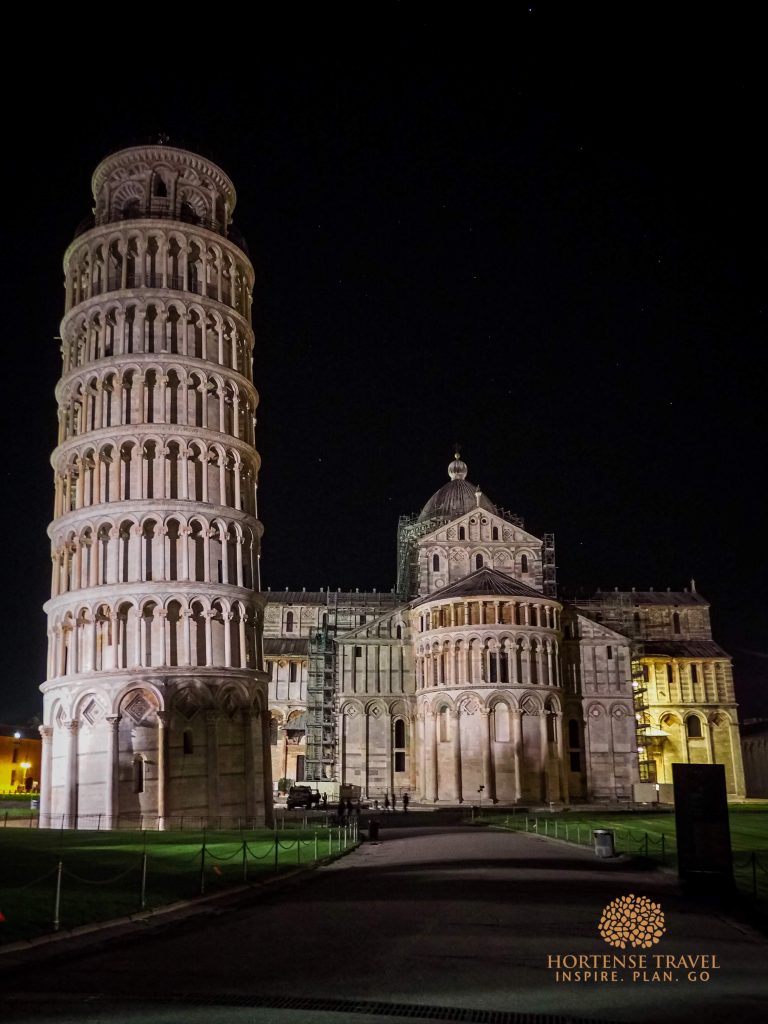
Baptistery
If you want to get the perfect shot of the Leaning Tower of Pisa, the Baptistery is the place to go. A fine example of the change from Romanesque to Gothic architecture, the Baptistery is extremely beautiful from the outside and if you look really closely you will notice the 0.6-degree lean. Aside from the climb to the top to get that great photo of the Leaning Tower, inside you will find numerous sculptures, Arabic-style paving, and an impressive baptismal font.
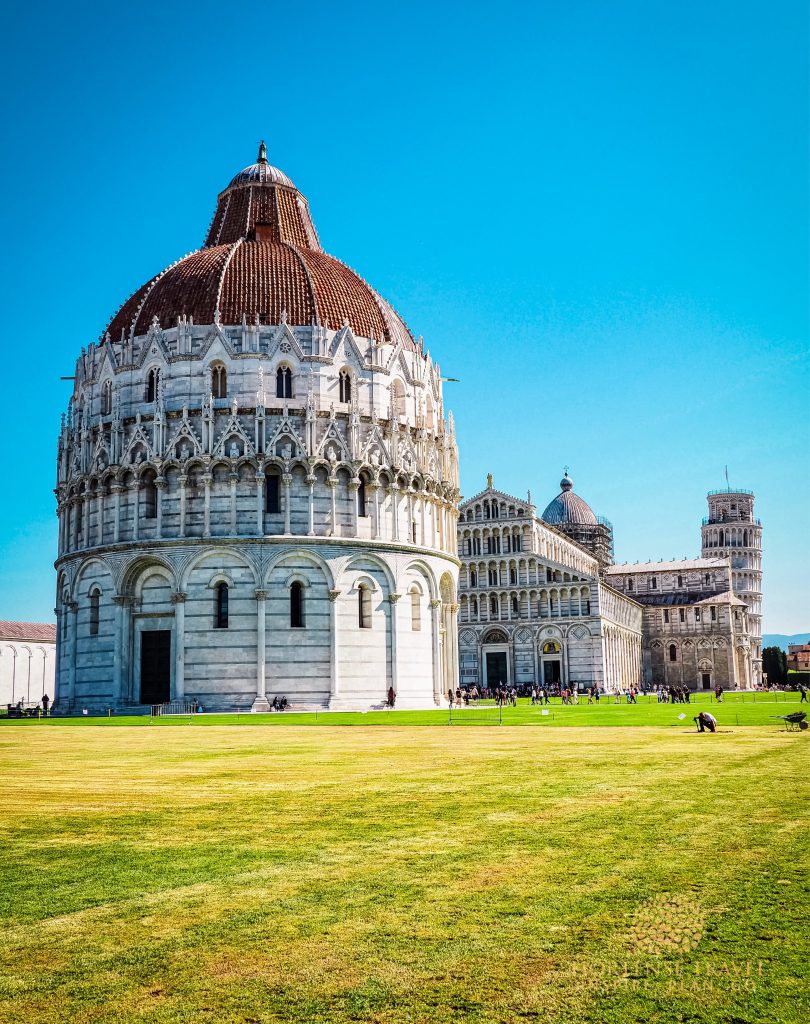
Monumental Cemetery
Many visitors tend to miss the Monumental Cemetery, but it is definitely worth setting some time aside to visit. It is a great place to enjoy some peace and quiet away from the buzzing crowds you will encounter in the piazza, plus you will get to admire some fantastic medieval frescoes. There is also a collection of Roman sarcophagi here.
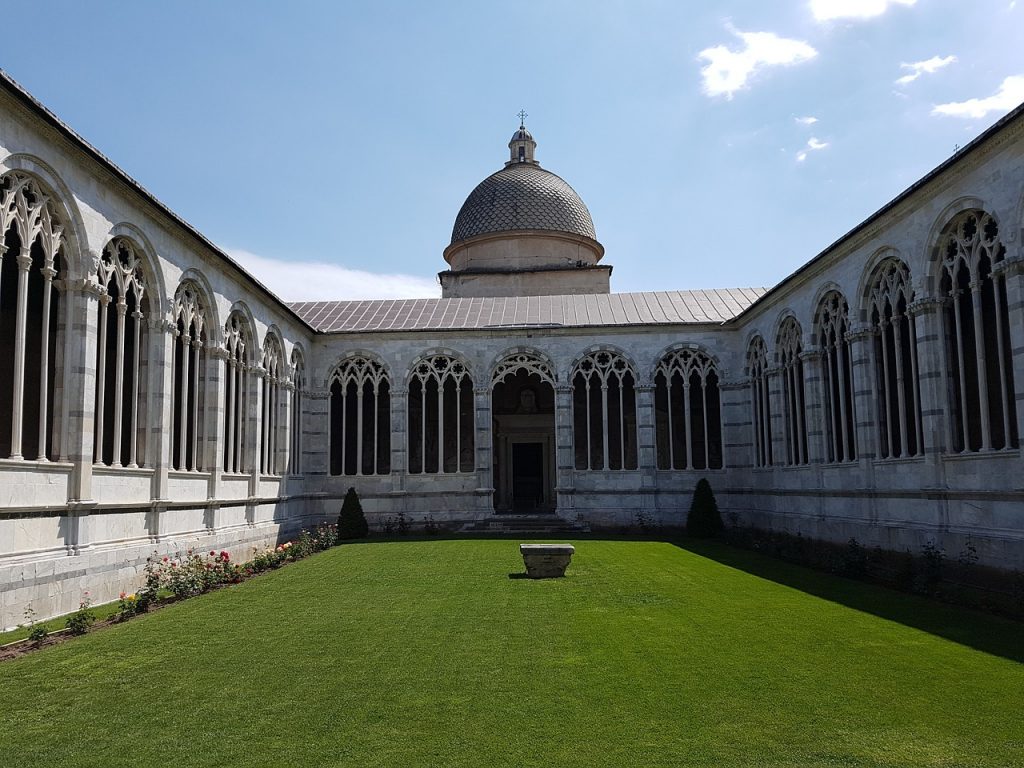
Explore the Streets of Pisa and eat your way through them
No Pisa is not only the leaning tower. And who tells you that is because they didn’t have the decency to explore the streets of Pisa. It actually is not a touristic city in my opinion. We hardly ever saw American travelers away from the tower. It’s a city where you can definitely feel what the real life of Italians is.
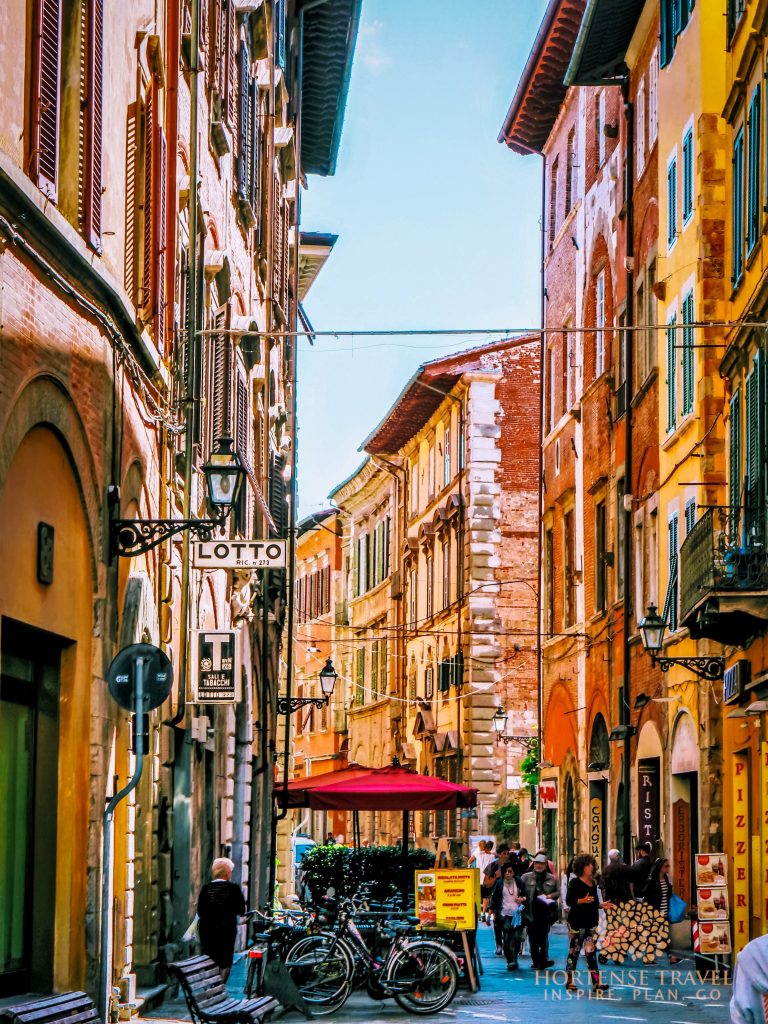
And what makes it even cooler is that it’s a university city so you’ll be surrounded by young faces everywhere. In the night it’s quiet and perfect to have the Piazza dei Miracoli to yourself. While during the day it comes alive with its endless shopping arcades, sunny cafés, and restaurants.
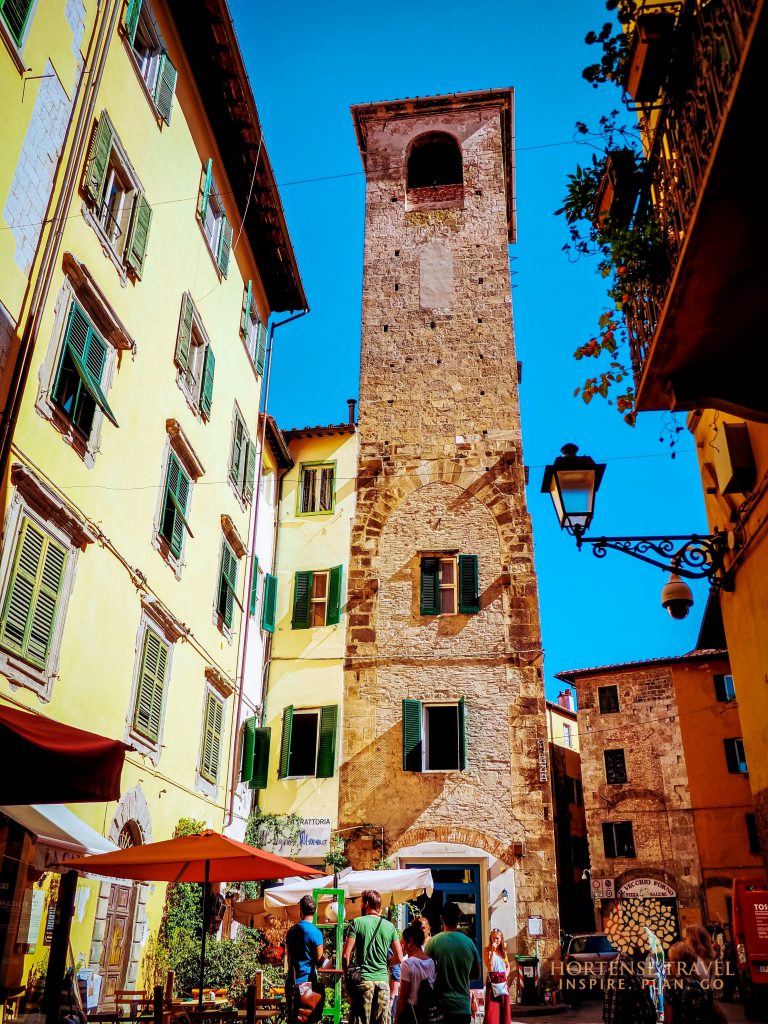
Don’t forget to eat a Tuscan pizza. I call it that because the base of the pizza is fluffy and thick compared to the original one from Naples. But the tomato sauce on each pizza is to die for which makes it just so tasty.

If you have made the decision to spend a couple of days exploring the cities of Florence and Pisa, you have certainly made a great choice. They are both exceptionally beautiful cities where history really comes alive. Add delicious cuisine, excellent wine, and fabulous shopping opportunities into the mix, and you can be guaranteed a fantastic visit to Florence and Pisa in 2 days.
When you’re short on time it’s difficult to pick up the right things to do for you and still enjoy a place to its fullest. This is where my trip planning services come into play. Check them out and let’s start planning.
